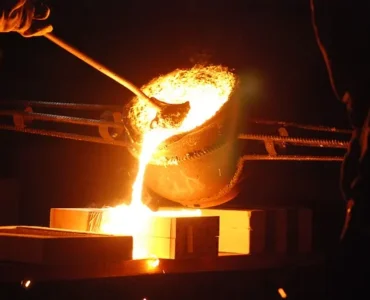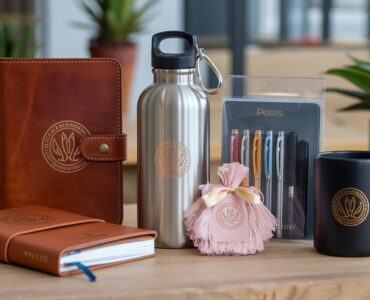Introduction to Stainless Steel 430
Stainless steel 430 is a versatile and cost-effective material used across various industries. This ferritic stainless steel is known for its moderate corrosion resistance, heat resistance, and magnetic properties. Unlike austenitic stainless steels, such as 304, SS 430 does not contain nickel, making it more affordable. This blog explores the key properties, common uses, and market trends of stainless steel 430, including the stainless steel 430 price per kg.
Chemical Composition of Stainless Steel 430
- Chromium (16-18%): Provides resistance to corrosion and enhances the material’s shiny finish.
- Iron (Balance): The primary component that ensures structural strength.
- Carbon (≤0.12%): Low carbon content prevents carbide precipitation, which enhances corrosion resistance.
- Manganese (≤1%): Improves strength and hardness.
- Silicon (≤1%): Enhances oxidation resistance at high temperatures.
Key Properties of Stainless Steel 430
Understanding the properties of SS 430 helps in determining its suitability for various applications. Here’s a detailed look at its key attributes:
1. Corrosion Resistance
SS 430 offers good resistance to corrosion in mild environments. It is suitable for indoor use and applications exposed to limited chemicals. However, it is less effective in harsh or marine environments.
2. Magnetic Properties
SS 430 is magnetic due to its ferritic structure. This property is useful in applications requiring magnetism, such as magnetic door catches and automotive components.
3. Heat Resistance
SS 430 can withstand temperatures up to 815°C, making it suitable for applications involving moderate heat exposure, such as kitchen appliances and exhaust systems.
4. Mechanical Properties
With a tensile strength of approximately 450 MPa and a yield strength of 205 MPa, SS 430 provides a good balance of strength and ductility. It is less ductile than austenitic grades like 304 but is suitable for many forming and shaping processes.
5. Fabrication and Formability
SS 430 is easy to form, weld, and machine, making it a versatile material for various manufacturing processes. It is commonly used in sheet form for a wide range of applications.
Also Read: Columbia Heights Bail Bonds Company
Common Uses of Stainless Steel 430
Stainless steel 430 is widely used in several industries due to its balance of performance and affordability. Here are some common applications:
1. Kitchen Appliances and Utensils
- Cookware and Cutlery: Ideal for pots, pans, and kitchen utensils due to its ability to maintain a polished surface and resist rust.
- Appliance Exteriors: Used in refrigerators, dishwashers, and ovens for its attractive finish and ease of cleaning.
2. Automotive Components
- Exhaust Systems: Provides durability and heat resistance for automotive exhaust components.
- Trim and Decorative Parts: Its magnetic properties and aesthetic appeal make it suitable for automotive trims and decorative elements.
3. Building and Construction
- Architectural Features: Used in wall panels, elevator doors, and trims due to its shiny finish and moderate corrosion resistance.
- Furniture: Preferred for indoor furniture and fixtures for its appearance and durability.
4. Industrial Applications
- Fasteners and Fixings: Utilized in screws, bolts, and other fasteners where moderate corrosion resistance is required.
- Heat Exchangers: Suitable for industrial heat exchangers due to its heat resistance and moderate corrosion resistance.
Market Trends and Pricing: Stainless Steel 430 Price Per kg
The pricing of stainless steel 430 is influenced by various factors including raw material costs, supply and demand, and global trade policies. Understanding these trends can help you make more informed purchasing decisions.
Current Pricing
The stainless steel 430 price per kg typically ranges from $1.20 to $1.80 USD. The absence of nickel in its composition makes it a more affordable option compared to higher-grade stainless steels.
Factors Affecting Price
- Raw Material Costs: Fluctuations in the price of chromium and iron impact the cost of SS 430.
- Supply and Demand: Market demand in key sectors like automotive and construction affects pricing.
- Global Trade Policies: Tariffs and trade agreements can influence the final price.
- Energy and Transportation Costs: Higher fuel prices can lead to increased shipping costs.
Future Market Outlook
Demand for stainless steel 430 is expected to remain stable, driven by its versatility and cost-effectiveness. Advances in manufacturing technology may further enhance its market appeal.
Also Read: Roof Waterproofing Company
Innovations in Stainless Steel 430
Recent innovations in the manufacturing and processing of stainless steel 430 have enhanced its properties and expanded its applications. Advances in metallurgical techniques have led to improved surface finishes and greater consistency in mechanical properties. These innovations are making SS 430 even more competitive in industries where both performance and cost are critical.
Surface Treatments: Modern surface treatments, such as passivation and coating, are improving the corrosion resistance and aesthetic appeal of SS 430. These treatments help to enhance the material’s resistance to staining and oxidation, making it more suitable for demanding applications in various environmental conditions.
Custom Alloys: Some manufacturers are developing custom alloys based on SS 430, which incorporate additional elements to improve specific properties. These tailored alloys are designed to meet the unique needs of specialized applications, such as high-temperature environments or enhanced wear resistance.
Environmental Impact and Sustainability
Sustainability is an increasingly important consideration in material selection, and stainless steel 430 offers several environmental benefits. Its high recyclability and durability contribute to its eco-friendly profile.
Recyclability: Stainless steel 430 is fully recyclable, which reduces its environmental impact. Recycled stainless steel retains most of its original properties, making it a sustainable choice for various applications. The recycling process also requires less energy compared to producing new stainless steel from raw materials, contributing to lower carbon emissions.
Longevity: The durability of SS 430 ensures a long service life, reducing the need for frequent replacements and minimizing waste. Its resistance to corrosion and wear means that products made from SS 430 have a longer lifespan, which supports sustainable practices by reducing material consumption and waste.
Comparative Analysis with Other Stainless Steels
While SS 430 is a versatile and cost-effective choice, it’s essential to understand how it compares with other stainless steel grades to make the best material selection for your needs.
SS 304 vs. SS 430: SS 304, an austenitic stainless steel, offers superior corrosion resistance and non-magnetic properties compared to SS 430. However, SS 304 is more expensive due to its nickel content. For applications where corrosion resistance is critical and cost is less of a concern, SS 304 may be preferred. Conversely, SS 430’s lower price and magnetic properties make it suitable for applications where these features are advantageous.
SS 316 vs. SS 430: SS 316 provides higher corrosion resistance than SS 430, particularly in marine environments and chemical processing. The presence of molybdenum in SS 316 enhances its resistance to chloride-induced corrosion. However, SS 316 is also more costly. SS 430 remains a practical choice for applications where cost considerations and moderate corrosion resistance are the primary factors.
Choosing Stainless Steel 430 for Your Project
Selecting the right material for your project involves balancing performance needs and budget constraints. Stainless steel 430 offers a combination of affordability and functionality suitable for various applications.
When to Use Stainless Steel 430
- Cost Sensitivity: Ideal for projects with tight budgets due to its lower price per kg.
- Moderate Corrosion and Heat Resistance: Suitable for applications exposed to mild environments and moderate temperatures.
- Magnetic Applications: Perfect for uses requiring magnetic properties.
- Aesthetic Appeal: Used in applications where visual appearance is important.
Conclusion
Stainless steel 430 provides a practical balance of performance and affordability for many applications. Its moderate price per kg, combined with its corrosion resistance, heat resistance, and magnetic properties, makes it a versatile material. Understanding the key properties, uses, and market trends can help you make informed decisions for your projects, ensuring you achieve the desired results while maintaining cost efficiency.




